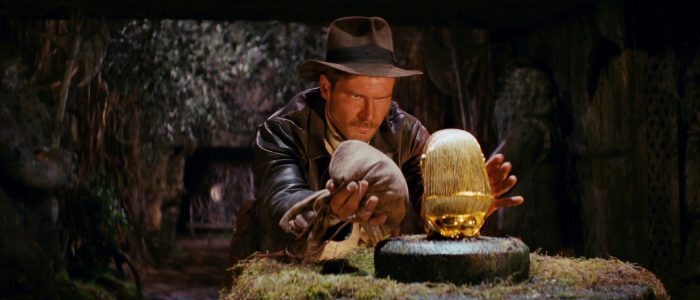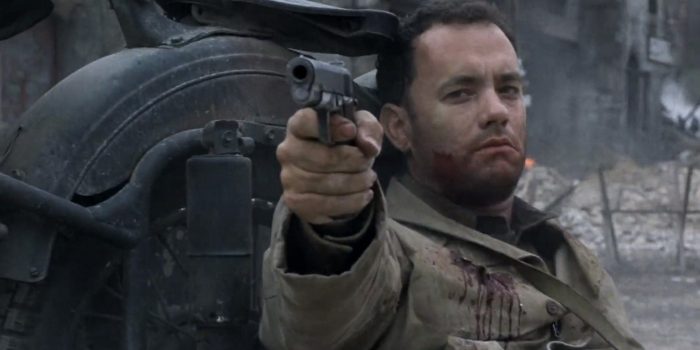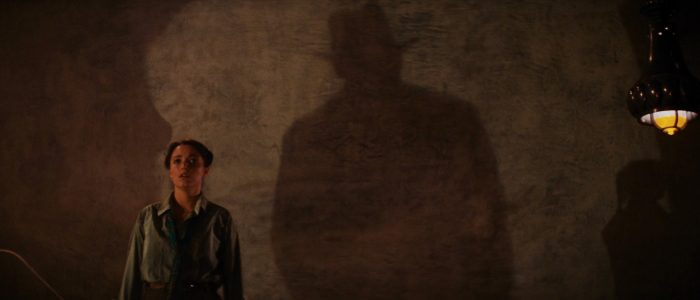On Sunday, March 4, 2018, the Academy of Motion Picture Arts and Sciences will be holding its 90th ceremony. The Oscars are the Super Bowl for cinephiles. Though the true relevance of the ceremony is often questioned, it still carries prestige as the pre-eminent film awards event.
Looking back through nine decades worth of Best Picture nominees, it’s clear there were a number of years where two or more iconic films were up against each other. 1994, for instance, featured an especially sticky three-way grudge match between Forrest Gump, Pulp Fiction, and The Shawshank Redemption (Gump’s gotta go, but Shawshank? Never.) There are other years, however, where one nominated title pops up as a clear cut above the rest, and the fact that it did not win seems like an egregious miscarriage of movie justice.
You can’t always fault the Academy for its short-sightedness. Time has a way of showing what really matters.
This is the time-traveler’s list, the list that comes from the benefit of hindsight and should be delivered promptly into the hands of Academy members in the past. An important distinction to make about this list is that it only covers films that actually were nominated for Best Picture.
There are any number of worthy films like Do the Right Thing, 2001: A Space Odyssey, or Psycho that were inexplicably never nominated for Best Picture. We’ve actually got a separate list of those that Angie Han compiled for the site back in 2015. Way back in 2007, our fearless leader, Peter Sciretta, also compiled his own short list of nominees/non-nominees that should have won, but didn’t.
Brokeback Mountain (2005)
Brokeback Mountain is one of the more infamous examples of a film that was snubbed for Best Picture at the Academy Awards. Leading up to Oscar night, Ang Lee’s neo-Western romance had won enough Best Picture awards at other major ceremonies that it was heavily favored to win, but instead, the L.A. race-relations drama Crash claimed the golden statuette in a major upset.
Cultural attitudes were in an evolving state when Brokeback Mountain arrived. This film helped pave the way for last year’s Best Picture winner, Moonlight. At the time, much of the media embraced it, yet it was still the subject of late-night talk show jokes, with hosts blithely referring to it as “that gay cowboy movie” – a phrase that caught on and seemed to reduce the film to a parody logline.
As much as Hollywood prides itself on having progressive values, the voting body of the Academy has traditionally been made up of an older white male majority that exhibits a conservative streak when it comes time to move beyond nominations to the real business of choosing winners. Since two years ago, the outcry on behalf of historically underrepresented groups has led to more diversity in nominations and wins. However, in the more nervously accepting atmosphere of early 2006 (as evidenced by all the jokes), some members may have been secretly hesitant about casting a ballot for a movie that depicted a love story between two men.
Brokeback Mountain is more than a love story, however. On its most universal level, it’s a movie about repressed longing. Brought to life by Heath Ledger, who would win a posthumous Oscar three years later for The Dark Knight, Ennis Del Mar is a man who murmurs through a clenched mouth, often squinting, as if just the act of speaking requires tremendous effort for him. Bound by fear and responsibility, he denies what he really wants in life, making excuses, leaving his chance at happiness in a pickup truck’s rearview mirror.
Saving Private Ryan (1998)
In 1993, the Best-Picture-winning Holocaust drama Schindler’s List marked a seismic shift in Steven Spielberg’s career. Collaborating with cinematographer Janusz Kaminski, the tone and color palette of Spielberg’s films changed, with more desaturated colors leaking in as the director of a movie about a grown-up Peter Pan adopted less boyish, more adult concerns.
Before there was Dunkirk, there was Saving Private Ryan. Released the same year as Tom Brokaw’s bestseller The Greatest Generation, which helped revive interest in the same era, Spielberg’s World War II epic ranks as one of his finest films and one of the best war movies, period.
Last summer, Ethan Anderton closed out an edition of our /Answers column by talking about Saving Private Ryan in the context of the greatest war movie scenes. Eschewing the obvious choice of the film’s D-day beach landing scene — with its visceral, harrowing images of men retrieving their own limbs and having their heads shot through after lucky helmet saves — he instead chose to focus on a more up-close knife-through-the-heart scene. Saving Private Ryan is full of personalized deaths and what this movie really seems to be about is heroism inspired not by patriotism, the waving of a bleached-out flag, but rather humanism.
The movie’s tagline, “The mission is a man,” references how a squad of eight men is sent in to rescue a single soldier whose brothers have all died in the war. To make this movie, Spielberg put his actors through boot camp and filmed the scenes in chronological order. Their camaraderie feels real and when some die, the loss is greater because we know them. It’s a reminder of our forebears, how the sacrifices of those who went before us entrust us with the responsibility of living a good life.
Saving Private Ryan wasn’t the only World War II movie nominated for 1998’s Best Picture. The Thin Red Line, Terrence Malick’s poetic return to cinema after a two-decade absence, also got nominated. But the winner was Shakespeare in Love, and the elephant in the room with that movie is, of course, Harvey Weinstein. With Shakespeare in Love, the disgraced mogul instituted a new model for cutthroat campaigning during awards season, appealing to the Academy’s love of tales about showbiz people (Birdman and The Artist being other more recent examples).
Raiders of the Lost Ark (1981)
If cinema is the highest art form — because it’s the ultimate hybrid of other art forms — then Raiders of the Lost Ark capitalizes on the medium’s full potential to elevate its story. Made in the time before PG-13 (we have its sequel to thank for that rating), Spielberg’s first Indiana Jones film plunges us into a B-movie world full of hard-drinking women, Nazi-saluting street monkeys, cackling Cairo henchmen, torture-device-like coat hangers, and a MacGuffin with the furious, face-melting power of God. Yet it somehow manages to wrap all this goofiness in memorable music, quotes, and images. It offers the complete package as a cinematic experience.
At the People’s Choice Awards in ’82, Raiders won “Favorite Motion Picture” and it feels like this is one instance where the people were ahead of the curve. Chariots of Fire is the film that won Best Picture at the Academy Awards that year. It’s an inspiring sports movie with an instantly recognizable theme tune by Blade Runner composer Vangelis. At the same time, it’s a film with considerably less cultural resonance than Raiders of the Lost Ark. If, as Indy says, “It’s not the years, honey, it’s the mileage,” then Raiders is a film with far more mileage on it in theaters and home media.
The Academy should, of course, make merit-based selections without catering to popular tastes, but if there’s one thing Oscar history shows, it’s that the Academy has a tendency to discount good old-fashioned entertainment value in favor of straight-laced dramas with the veneer of more importance.
Raiders of the Lost Ark is an expertly staged action-adventure film that gave us one of cinema’s greatest heroes, enough spectacular stunts to fill a whole theme park show, show-stopping set pieces like the Well of Souls and the boulder chase through a booby-trapped temple, and a number of musical cues from John Williams that could go toe-to-toe with that Chariots theme. No wonder Harrison Ford lost interest in Han Solo. In the whip-cracking archeologist who wears a Fedora and only fears snakes, he found an even better character to play. Even in silhouette, the figure of Indiana Jones is unmistakable, whether it be on a tavern wall or against the sun at a dig site.
Continue Reading Best Picture Nominees That Should Have Won >>
The post 10 Great Best Picture Nominees That Should Have Won appeared first on /Film.
from /Film http://ift.tt/2BFevDS




